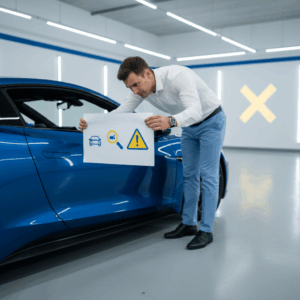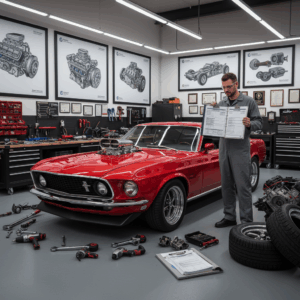Safety Regulations for Car Manufacturers
Car manufacturers must comply with stringent safety regulations designed to enhance road safety and protect passengers. These laws ensure vehicles are equipped with the latest technologies.
The focus is on integrating advanced systems to reduce accidents and improve driver awareness. Compliance with these regulations is mandatory in many regions worldwide.
Advanced Vehicle Safety Technologies Required
Modern regulations require fitting cars with advanced safety features such as intelligent speed assistance and drowsiness monitoring systems. These technologies aim to prevent accidents caused by human error.
Warning systems for distractions and event data recorders, often called «black boxes,» are also mandated. They collect crucial information to analyze incidents and improve vehicle safety standards.
Manufacturers must ensure all vehicles meet these technical requirements, promoting safer driving environments and reducing accident rates significantly.
Vehicle Type Approval and Certification
Before a vehicle can be sold, it must receive type approval confirming compliance with safety and emission standards. This certification ensures the vehicle legally meets all regulatory requirements.
The Certificate of Conformity (COC) is a key document proving that the vehicle complies with applicable laws. It serves as a guarantee for consumers and authorities alike.
Obtaining approval requires rigorous testing and validation, helping manufacturers maintain quality and safety across their product lines.
Emissions Standards and Compliance
Car manufacturers face strict emission standards designed to limit harmful pollutants and combat climate change. Compliance ensures vehicles contribute less to environmental damage.
These standards address various pollutants, including greenhouse gases, which directly impact global warming. Regulatory bodies worldwide enforce these limits to protect public health.
Greenhouse Gas Emission Limits
Regulations set specific limits on greenhouse gas emissions per kilometer to reduce automotive environmental impact. Manufacturers must ensure their fleets meet these thresholds.
These limits drive innovation towards cleaner engines and alternative powertrains, helping reduce overall transport emissions and align with global climate goals.
Failing to meet these limits risks penalties and restrictions on vehicle sales, pushing manufacturers to invest in sustainable technologies.
Euro 6 Emission Standards
The Euro 6 standard is a major regulatory framework in the European Union focused on reducing pollutants like nitrogen oxides and particulate matter.
All new vehicles sold in the EU must comply with Euro 6 requirements, which involve rigorous testing under real driving conditions to verify emissions performance.
This standard effectively reduces harmful exhaust emissions, improving air quality and public health across Europe.
Average CO2 Emission Targets
Manufacturers are required to achieve an average CO2 emission limit across their entire vehicle fleet, currently set below 130 grams per kilometer in the EU.
These targets promote the development and adoption of low-emission vehicles such as electric and hybrid models.
Innovations Driven by CO2 Targets
Ambitious CO2 limits have accelerated advancement in powertrain efficiency and alternative fuels, fostering a cleaner transportation sector globally.
Workplace Safety and Industry Standards
Ensuring a safe working environment is a critical aspect for car manufacturers. Compliance with industry standards like ISO 45001 helps minimize risks and protect employees.
By adhering to these standards, companies create systematic processes to identify hazards and implement effective safety measures in their manufacturing plants.
ISO 45001 Occupational Health and Safety Requirements
ISO 45001 is an international standard focusing on occupational health and safety management systems. It guides manufacturers in reducing workplace injuries and illnesses.
This standard requires organizations to proactively assess risks, set policies, and engage workers in safety practices, fostering a culture of continuous improvement.
Implementation of ISO 45001 involves regular audits, training, and incident investigations to ensure compliance and safeguard workers’ well-being throughout the production process.
Legal Obligations and Industry Impact
Car manufacturers operate under rigorous legal obligations encompassing safety, emissions, and workplace standards. These mandates ensure vehicles meet comprehensive regulatory frameworks.
Compliance is critical for market access and reputation. Failure to adhere can lead to sanctions, product recalls, or sales bans, driving manufacturers to prioritize lawful practices.
Regulatory Enforcement and Compliance Monitoring
Regulatory agencies conduct ongoing enforcement actions and monitoring to ensure manufacturers meet all legal requirements. This includes on-road inspections and data audits.
Non-compliance triggers penalties such as fines, restrictions, or legal proceedings that uphold industry standards and protect consumers and the environment.
Manufacturers invest in robust compliance systems and frequent testing to avoid violations and maintain transparency with regulators.
Impact on Manufacturing Processes and Innovation
Legal obligations significantly influence manufacturing processes, prompting investments in cleaner technologies and safer vehicle designs to meet evolving standards.
These requirements drive innovation, encouraging development of advanced safety systems and environmentally friendly powertrains to secure a competitive edge.
Balancing Compliance with Innovation
Meeting legal demands pushes manufacturers to integrate cutting-edge technologies while managing costs and production efficiency in a highly regulated market.
This balance fosters continuous improvement and sustainability, positioning companies to thrive amidst stricter global regulations and consumer expectations.







